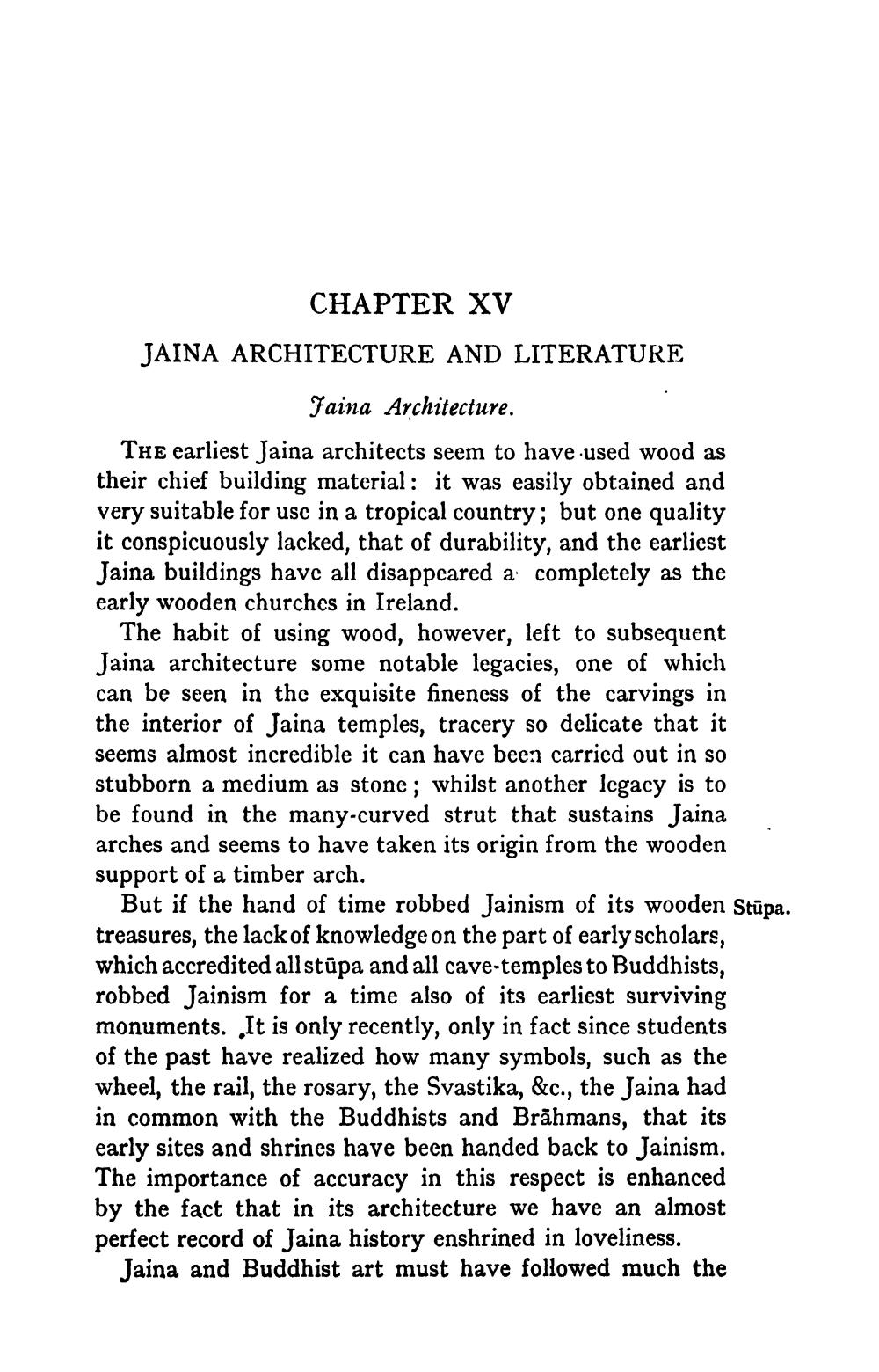________________
CHAPTER XV JAINA ARCHITECTURE AND LITERATURE
Faina Architecture. The earliest Jaina architects seem to have used wood as their chief building material: it was easily obtained and very suitable for use in a tropical country; but one quality it conspicuously lacked, that of durability, and the earliest Jaina buildings have all disappeared a completely as the early wooden churches in Ireland.
The habit of using wood, however, left to subsequent Jaina architecture some notable legacies, one of which can be seen in the exquisite fineness of the carvings in the interior of Jaina temples, tracery so delicate that it seems almost incredible it can have been carried out in so stubborn a medium as stone; whilst another legacy is to be found in the many-curved strut that sustains Jaina arches and seems to have taken its origin from the wooden support of a timber arch.
But if the hand of time robbed Jainism of its wooden Stūpa. treasures, the lack of knowledge on the part of early scholars, which accredited allstūpa and all cave-temples to Buddhists, robbed Jainism for a time also of its earliest surviving monuments. It is only recently, only in fact since students of the past have realized how many symbols, such as the wheel, the rail, the rosary, the Svastika, &c., the Jaina had in common with the Buddhists and Brāhmans, that its early sites and shrines have been handed back to Jainism. The importance of accuracy in this respect is enhanced by the fact that in its architecture we have an almost perfect record of Jaina history enshrined in loveliness.
Jaina and Buddhist art must have followed much the




